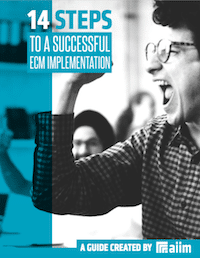The AIIM Blog
Keep your finger on the pulse of Intelligent Information Management with industry news, trends, and best practices.
Certified Information Professional (CIP)
I’m way too old for this! Seriously, do you know how long it’s been since I’ve taken a major exam?! Besides, I’m not a good test taker! These were just some of the excuses that were preventing me from taking the CIP exam. Well, apparently, I’m not too old, and I’m a better test taker than I expected. I recently took the CIP prep class at AIIM’s headquarters in Silver Spring, MD, took the exam, and I passed. Woo hoo!!!!
Share
It’s no secret that the IT landscape continues to experience major shifts resulting from new and transformative technological advances in the mobile and cloud computing markets. The combination of mobile and cloud enables organizations to implement solutions based on their preferred and practical deployment model. Meaning, it’s no longer our way, it’s your way! The mobile + cloud value proposition undoubtedly has already had a profound impact on Enterprise Content Management (ECM) as it represents an opportunity for real-time capture, real-time delivery and real-time access to content. In the area of capture, the critical on-ramp to ECM, mobile/cloud allows organizations to further capitalize on the trend of capturing content at the point of origin resulting in significant cost savings, faster access to actionable data, reducing latency, and enhancing customer service. Capturing content at the point of mobile origin further extends these benefits as organizations are able to capture a broader range of critical content earlier in the business process.
Share

Making an ECM implementation successful requires planning and attention to detail. The best way to create the right solution is to identify organizational goals and priorities. Learn how to manage a successful implementation in our free guide.
Enterprise Content Management (ECM)
1. Business Assessment. Enterprise Content Management (ECM) should be implemented to help an organization achieve its business objectives and strategies. Recent industry studies indicate four primary drivers for ECM adoption: cost reduction, enhancing customer service, ensuring business continuity, and regulatory compliance. Organizations should do a thorough assessment of their needs in these key areas and identify the strategic imperatives that should be targeted by ECM. Return on the investment (ROI) provides proof of how ECM supports the organization’s business strategies. Success is identified by measuring business benefits.
Share